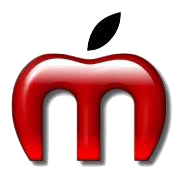What is the Purpose of Calendar Colors?
Using different calendar colors in Apple Calendar gives you quick visual cues, making it easier to distinguish between different calendars or event types at a glance. Each color can represent a specific category, like work, personal, family, school, health, or hobbies. Brighter or bolder colors can signify high-priority events, while neutral colors can mark less critical activities.
Benefits of Using Different Calendar Colors
- Improved Clarity & Focus: Quickly identify what type of commitment you’re looking at without reading each event.
- Time Management Efficiency: Helps you allocate time more effectively by seeing how much space certain categories occupy in your schedule.
- Reduced Overwhelm: A clear color-coded calendar reduces mental clutter and helps prevent schedule overload.
- Faster Planning & Adjustments: Makes it easier to move or edit events without confusion when managing multiple responsibilities.
- Consistent Cross-Device Organization: Colors sync across iCloud-connected devices, so your system stays organized everywhere.
Default Calendars in Apple Calendar
Apple Calendar comes with a set of built-in or automatically generated calendars to help you organize your events. These may vary slightly based on your Apple ID, region, and whether you’re using iCloud. The most common default calendars are:
- Calendar (orange) – The main, generic calendar created for your Apple ID.
- Work (red) – For work-related events and meetings.
- Home (green) – For personal or household activities.
- Family (purple) – Shared calendar created when you set up Family Sharing.
- Birthdays (gray) – Pulls from your Contacts app to remind you of birthdays.
- Holidays (blue) – A regional holiday calendar automatically added by Apple.
- Siri Suggestions (gray) – Events suggested by Siri from emails or messages.
How to Change Apple Calendar Colors
On iPhone/iPad:
- Open the Calendar app.
- Tap Calendars, at the bottom of the screen.
- Find the calendar you want to change and tap the info (ⓘ) icon next to it.
- Select a color from the list.
- Tap Done to save your choice.
- Tap Done to return to the calendar.
On Mac:
- Open the Calendar app.
- If the sidebar is not already open, click the calendar icon, at the top.
- In the sidebar, Control-click (or right-click) the calendar you want to modify.
- Click the color dot you want for the new color, or click Custom Color to pick your own.
Assign Colors to Different Event Types
Apple Calendar doesn’t let you color individual events directly, but, if an event doesn’t fit neatly into one of the default calendars, you can create separate calendars for different event categories.
On iPhone/iPad:
- Open the Calendar app.
- Tap Calendars, at the bottom of the screen.
- Tap Add Calendar, at the bottom-left of the screen.
- Tap Add Calendar from the list.
- Name the calendar (e.g. Fitness, kids, Vacations).
- Choose a color and tap Done.
On Mac:
- Open the Calendar app.
- From the menu bar, select File
- Select New Calendar.
- The new calendar appears in the Calendar app sidebar. Give it a name.
- A color is automatically assigned to your new calendar. If you want to change it, Control-click ( or right-click) the calendar name and click the color dot you want for the new color, or click Custom Color to pick your own.
When creating an event, select the appropriate calendar for that category.
Conclusion: Maximize Your Schedule with Apple Calendar Colors
Using colors in Apple Calendar is more than a visual preference – it’s an effective way to organize your life. By assigning colors to your calendars – whether for work, personal tasks, family, or hobbies – you gain instant visual clarity and make scheduling effortless. Apple’s default colors provide a strong starting point, but customizing them lets you create a calendar system that matches your priorities and workflow. Whether on iPhone, iPad, or Mac, thoughtful color coding helps you plan better, reduce stress, and stay organized across all your devices.


